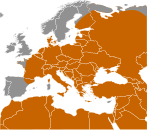Vitamin D occurs naturally in very few foods. Milk has very little Vitamin D. It has it today because it is fortified with it. Likewise, meat in general doesn't have very much, but organ meats have more. The biggest source of it is in fish, particularly oily fish.
See:
https://ods.od.nih.gov/factsheets/VitaminD-HealthProfessional/
In some hunter-gatherer groups in Europe they got 80% of their caloric intake from meat and fish. Around the Baltic a very large percentage of that 80% was from fish. In some Neolithic societies the percentages were almost exactly reversed, although
it varied by area. I've previously posted papers on all of this. Consumption of cow meat (domesticated) seems to have been more for celebrations and other ritual purposes. The liver is a very small part of the cow, of course. Pork has more and they did consume some pigs, but again, it would have been fish consumption which would have made a big difference.
In the book "The Early Mediterranean Village", Robb makes much of the fact that although there were fresh water lakes near some of these Italian Neolithic settlements there is no evidence that the Neolithic farmers actually ate fish. It almost seemed to him like a deliberate aversion. In other areas there was some hunting and some fishing, but by no means in all. Later on, with downturns in the climate, or, who knows, with some admixture with some remnants of the WHG, there was some increased reliance on hunting and fishing.
http://www.cambridge.org/cu/academi...e-and-social-change-neolithic-italy?format=PB
There is also a paper which I previously posted showing that even in Scandinavia and the Baltic people who had previously based most of their diet on fish stopped eating it when they turned to agriculture. It was only later, perhaps with the collapse of the Neolithic package, that they turned to the sea again for food. I've wondered, as Frachetti seemed to indicate in his books and articles whether grain took on an almost ritual significance.





